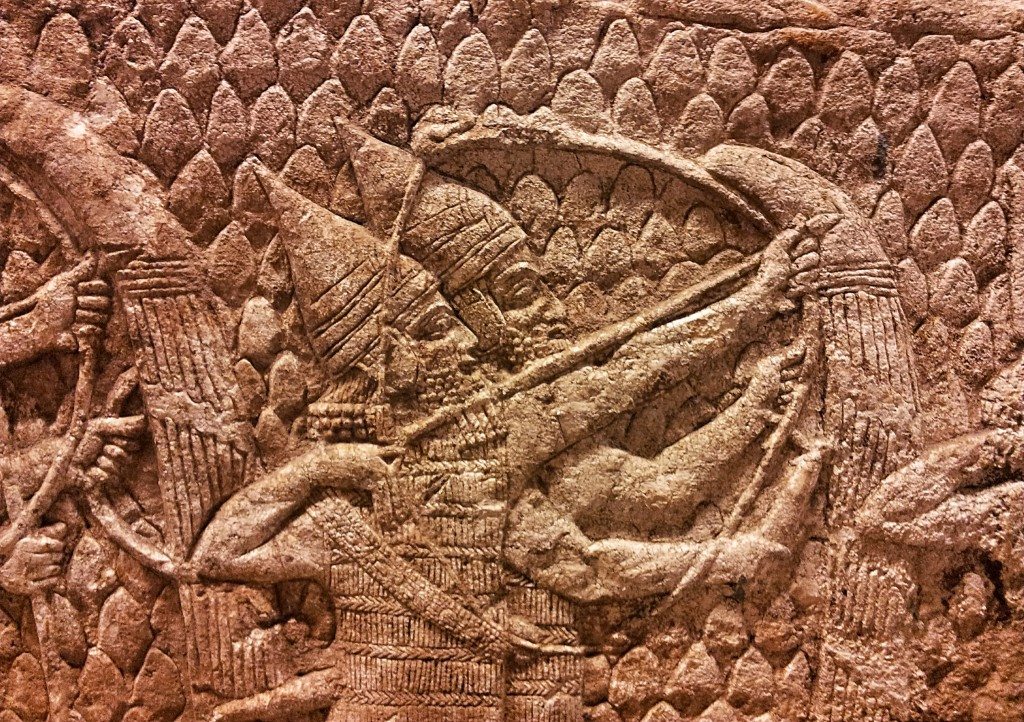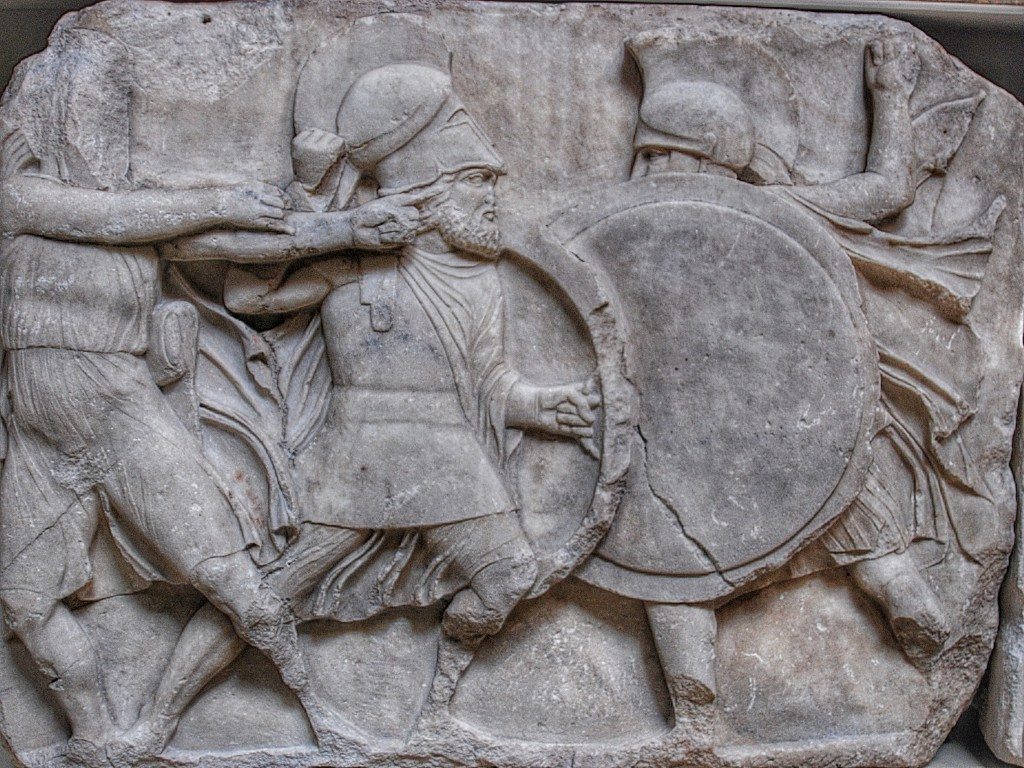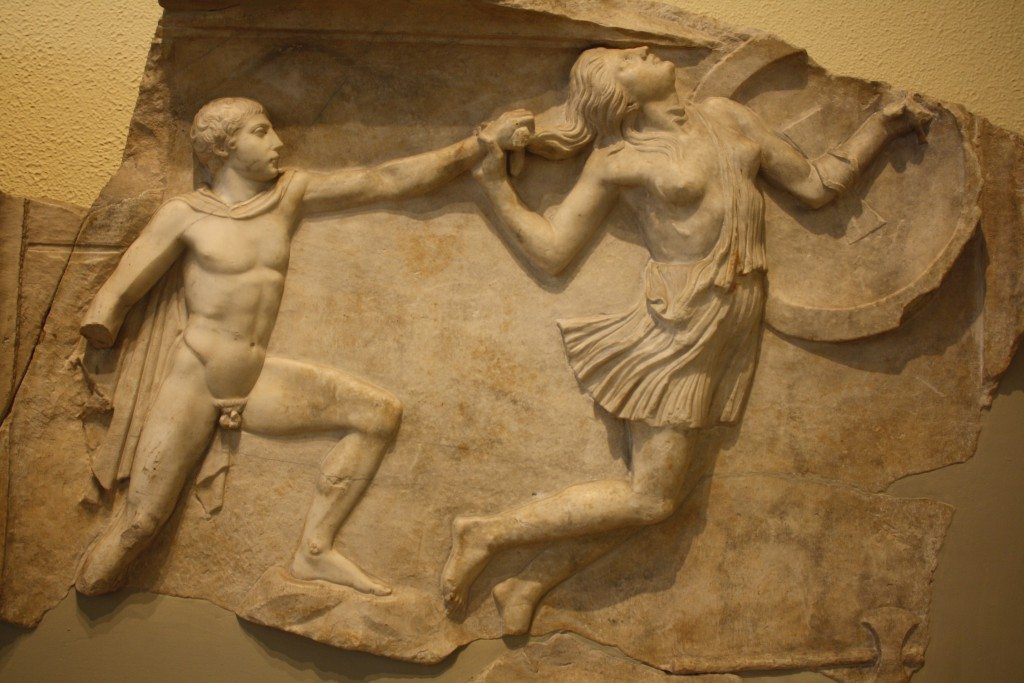This post is part of a series of image posts Ancient History et cetera will be putting together each month. Today’s post concerns ancient warriors!
Ancient warfare was vastly different from how it is conducted today; the vanquished could be certain that slavery or execution awaited them. Initially, ancient armies were made up of infantry units who would engage enemy forces on the field with spears, shields, some form of body armour and a helmet. In time, armies developed to include shock troops, peltasts and include strategies like the formation known as the phalanx.
The hoplite is the Greek solider most are familiar with. His complete suit of armour was a long spear, short sword, and circular bronze shield; he was further protected, if he could afford it, by a bronze helmet, bronze breastplate, greaves for the legs and finally, ankle guards.
The Aztecs engaged in warfare (yaoyotl) to acquire territory, resources, quash rebellions, and to collect sacrificial victims to honour their gods. Warfare was a fundamental part of Aztec culture and all males were expected to participate. Eagle knights were a special class of infantry soldier in the Aztec army and one of the two leading military orders in their society.
The Assyrian war machine was one of the most efficient military forces in the ancient world. The secret to its success was a professionally trained standing army, use of iron weapons, advanced engineering skills and most importantly a complete ruthlessness, which proclaimed the power of ancient Assyria across the Near East.
The Roman army was usually commanded by a consul. Roman commanders generally preferred an aggressive and full-frontal attack, and they had many strategies to break enemy lines such as the tortoise, the wedge, skirmishing formation, repel cavalry and the orb.
Aztec Eagle Warrior

An almost life-size Aztec Eagle Warrior, one of the elite warrior groups in the Aztec military. 13-15th century CE, from Tenochtitlan (National Museum of Anthropology, Mexico City) Photo © Dennis Jarvis.
Assyrian Warrior Relief

These 1-meter high basalt reliefs depict Assyrian warriors of different ranks in procession with a royal chariot led by the commander-in-chief of the Assyrian army. From the palace of the Assyrian king Tiglath-PIleser III (744-727 BCE), ancient Hadatu (modern Arslan Tash), Neo-Assyrian era, Mesopotamia. Photo © Osama Shukir Muhammed Amin.
Assyrian Archers

Assyrian archers firing on the enemy during the siege of Lachish, located near Jerusalem. Each archer was protected from enemy fire by a shield bearer. The pointy pattern in the background indicates that this scene is happening in the mountains. These warriors are fighting with the army of King Sennacherib of Assyria (r. 705-681 BCE). This image is part of a series of reliefs depicting the siege and capture of the town, from the walls of Sennacherib’s palace in Nineveh. Palace relief, c. 700-692 BCE. British Museum, London, UK. Photo © Jan van der Crabben.
Greek Hoplites Fighting

Frieze of Greek hoplites fighting, from Nereid Monument at Xanthos in Lycia, ca. 390–380 BCE. On display at the British Museum, London. Photo © Jan van der Crabben.
Toltec Warrior Columns

The columns atop Pyramid B at the Toltec capital of Tollan (Tula), Mexico, which once supported a roof structure. They are each composed of four column drums and represent Toltec warriors ready for battle wearing their customary headdress and butterfly pectoral (10th-12th century CE). Photo © Luidger.
Scythian Warriors

Scythian warriors, drawn after figures on an electrum cup from the Kul’Oba kurgan burial near Kerch in what is present-day Crimea. Image from the 1900 edition of Encyclopédie Larousse Illustré.
A Warrior and an Amazon

A plaque relief depicting a Greek warrior pursuing an Amazon. Part of a pair of duplicate relief slabs. 2nd-century CE Roman copies of scenes from the shield of Athena on the Athena Parthenos statue by Pheidias in the Parthenon (Archaeological Museum of Piraeus, Athens). Photo © Mark Cartwright.
War and the Moche – Behind the scenes at the Horniman Museum
[embedyt]http://www.youtube.com/watch?v=7r6godCankY[/embedyt]
Originally published by: Horniman Museum and Gardens
This collection of Moche ceramics depicts warriors on their way up in society and some soon to be on the way out. Permanently. Acknowledged Moche expert George Lau describes more and helps unravel some of Moche’s most mysterious practices.
And don’t forget there are thousands of wonderful objects you can see for free at the Horniman – why not pop in and explore further?
